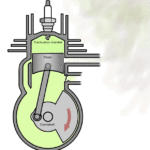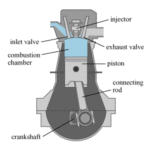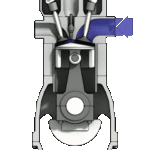Automatic vehicle location is one of the most adopted and applauded systems by transportation agencies. It has been described as one of the most innovative progressions in transit technology. Some people are new to the idea of being able to track vehicles, pets, or people using electronic devices, and many are likely to view it as an intruder in their lives and equate the appliance with a loss of freedom. However, AVL devices are a stroke of luck for many businesses at the management level and to parents concerned about the safety of their kids.
What is AVL (Automatic Vehicle Location) Technology?

Automatic vehicle location, or AVL, is a system that is primarily used for tracking vehicles, automobiles, and freight systems by using computer technology. A tracking device connected to the car sends out signals, thus passing on information about its real-time location to the control system. There are more than a few techniques for determining and transmitting its position, and the available requirements determine which method to be used. Normally, the device stores the position information for a specific phase. The device can send data in the form of electronic signals or processed data.
AVL systems may come in handy for purposes like automated destination signs, automatic stop announcements, monitoring vehicle mechanisms, and prioritizing traffic signals.
The following are some AVL benefits.
Also Read:
- Anti-lock Braking System (ABS) – Working Principle, Main Components with Advantages and Disadvantages
- How Power Steering System Works? – Best Explanation
- Types of Gearbox in Automobile – Complete Explanation
Service Restoration
AVL helps to restore customers back to service as quickly as possible in the event of storms or natural calamities, as this is its top priority. To do so, coordinating assets is crucial. AVL enables firms to manage and restore crews better than before. It has reduced time restoration—especially when substantial restoration efforts are needed, which often require non-company crew—to just a few hours, which can save hundreds of dollars per calamity. The system is also capable of providing dispatches to locate company teams when assisting other utilities.
Improved Efficiency and Productivity
Transportation companies use AVL systems to enhance the optimum operation of the fleet and to reduce fuel consumption, capital costs, and labor. AVL devices improve adherence to schedule and accessing passenger information. They also provide more data and make it easier to manage transportation systems. They therefore increase the net productivity and efficiency of the system.
Increased Customer Service
AVL systems enhance customer services due to the ability to predict vehicles’ arrival timing in real time. Also, when delivering customers’ merchandise, the vehicle’s location can be traced, and the customer can be advised accordingly to reduce complaints and to enable proper planning to receive the goods.
Are you wondering how you can get this innovation? Well, you can purchase AVL devices from a leading vendor and service provider reachable at Eyeride online. They also offer auxiliary technology, like automatic passenger counters, and help to analyze service performance in real time, thus enabling system planning and emergency repairs.
Response Time
AVL helps dispatchers to know the exact position of the vehicle so they can send the closest one to the job site. In return, this improves the response time, productivity, and customer service, as well as reduces fuel consumption, maintenance costs, and vehicle wear and tear.
Employees’ and Passengers’ Safety
Using AVL enhances the security of the driver and other crew members as well as passengers by making it easier to locate the vehicle and respond to accidents or other incidents.
Improved Operational Decisions
Employing AVL enables fleet managers to make better operational decisions on route changes and other things due to unexpected and sudden developments, like extreme weather conditions, road closures, accidents, and more.








